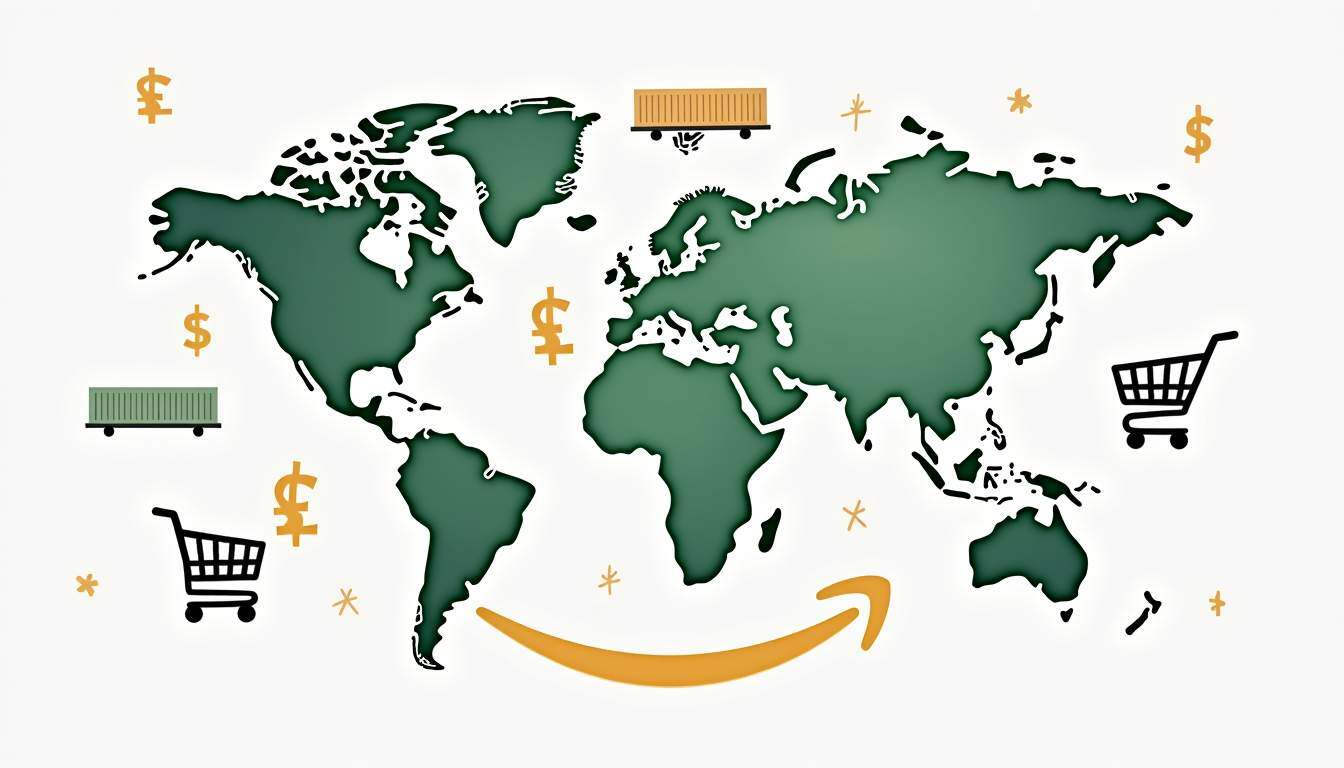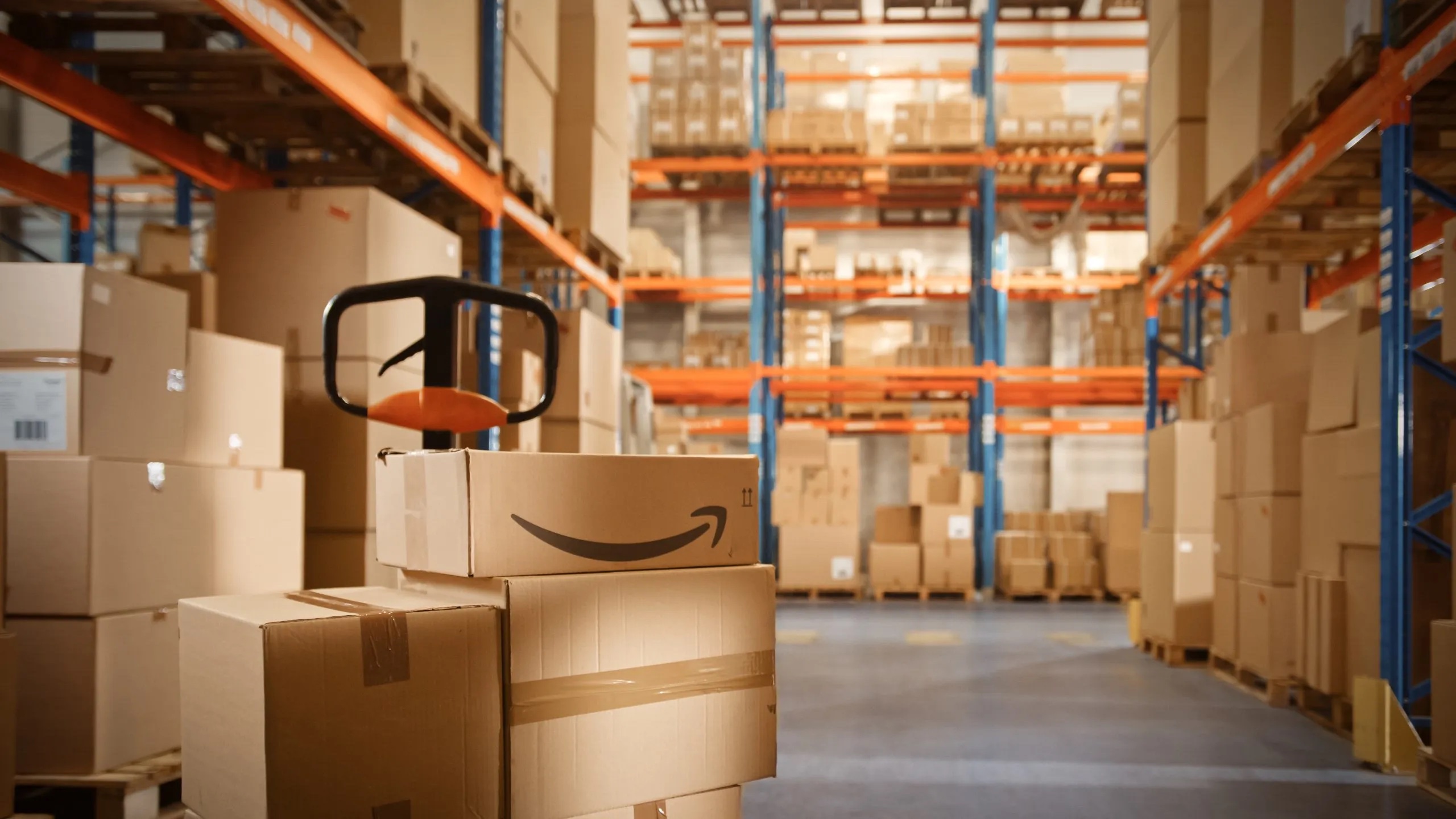Share this
How to Sell Internationally on Amazon In 2025
by Shipfusion Team on Feb. 21, 2025

Expanding into international markets presents a tremendous opportunity for ecommerce businesses looking to grow their sales and reach new customers. Amazon makes selling globally accessible through its various programs, but international expansion requires a solid strategy, careful marketplace selection, and an understanding of logistics, returns, and customer service. This guide provides a detailed overview of how to navigate these challenges and successfully sell internationally on Amazon.
Amazon Global Selling Program – Overview and Benefits
Amazon’s Global Selling Program (AGS) enables sellers to list and sell their products on Amazon marketplaces in multiple countries. By leveraging Amazon’s extensive infrastructure, sellers can access millions of new customers worldwide.
Key Benefits of Amazon Global Selling
- Increased Market Reach: Selling on Amazon’s international marketplaces allows businesses to tap into new customer bases in Europe, Asia, Australia, and other regions.
- Simplified Logistics: Amazon’s fulfillment network enables streamlined inventory management, reducing the complexity of cross-border shipping.
- Trusted Brand Recognition: Selling through Amazon gives credibility to international sellers since many consumers already trust Amazon’s services.
- Currency Conversion & Payment Processing: Amazon automatically converts payments to the seller’s home currency, reducing the hassle of managing multiple payment accounts.
To get started with AGS, sellers need to choose their preferred international markets, understand local regulations, and decide on a fulfillment strategy that best suits their business needs.
Choosing the Right Marketplace – Where to Expand First
Not all Amazon marketplaces are equally suitable for every business. Selecting the right marketplace requires careful analysis of product demand, competition, shipping logistics, and regulatory considerations.
Key Considerations When Selecting a Marketplace
- Market Demand: Conduct research on customer preferences and product demand in different regions.
- Competition Analysis: Assess the level of competition for your niche to determine market viability.
- Regulatory and Tax Compliance: Different countries have unique import regulations, tax requirements, and business laws.
- Language and Cultural Differences: Localization of product listings and customer communication is crucial for success.
Popular Amazon Marketplaces for Expansion
- Amazon North America (US, Canada, Mexico) – Ideal for businesses already selling in the US and looking to expand into Canada or Mexico.
- Amazon Europe (UK, Germany, France, Italy, Spain, Netherlands, Sweden, Poland) – Offers a broad and diverse customer base with strong ecommerce growth.
- Amazon Japan – A highly tech-savvy market with a strong demand for international products.
- Amazon Australia & Singapore – Emerging markets with growing ecommerce penetration.
International Shipping Strategies – FBA vs. FBM
A crucial aspect of selling internationally on Amazon is selecting the right fulfillment method. Amazon offers two primary fulfillment options: FBA and FBM.
Fulfillment by Amazon (FBA)
FBA simplifies global selling by allowing Amazon to handle storage, packing, shipping, and customer service for international orders.
Advantages of FBA for International Sellers
- Fast and Reliable Shipping: Orders are processed through Amazon’s fulfillment centers, ensuring quick deliveries.
- Prime Eligibility: FBA sellers qualify for Amazon Prime, increasing product visibility and conversion rates.
- Simplified Returns Handling: Amazon manages returns, reducing the logistical burden on sellers.
Challenges of FBA
- Higher Fees: Amazon charges storage and fulfillment fees that can impact profit margins.
- Extra Logistical Work: Sellers need to manage stock across multiple fulfillment centers worldwide, make sure they have a handle on Amazon FBA prep requirements, and continuously meet additional expectations set by Amazon.
- Regulatory Compliance: Import regulations and taxes may require additional paperwork and compliance efforts.
Fulfillment By Merchant (FBM) / Self-Fulfillment
For businesses looking for more control over inventory, self-fulfillment allows sellers to ship orders directly to international customers.
Advantages of FBM
- Greater Control: Sellers can manage inventory, packaging, and branding.
- Lower Storage Costs: Avoids Amazon’s storage and long-term inventory fees.
- Flexibility: Sellers can choose from various shipping carriers and methods.
Challenges of FBM
- Longer Delivery Times: Compared to FBA, self-fulfillment often results in longer shipping times.
- Higher Operational Complexity: Sellers must manage customs, duties, and tracking.
- No Prime Eligibility: FBM sellers cannot offer Prime benefits, which may impact sales.
Handling Returns and Customer Service
Returns and customer service are critical components of international selling. Each Amazon marketplace has specific return policies and expectations that sellers must adhere to.
Amazon FBA Returns
For FBA sellers, Amazon handles international returns and customer service, reducing the need for localized customer support teams. However, sellers should account for additional costs associated with return processing and restocking fees.
Handling Returns as an FBM Seller
For self-fulfilled orders, sellers must establish effective return policies, including:
- Setting up local return addresses in key markets to minimize return costs.
- Offering prepaid return labels where feasible.
- Providing excellent customer service to mitigate negative feedback and disputes.
Managing Customer Service for International Orders
Customer expectations vary across regions, making proactive and responsive support essential.
- Multilingual Support: Sellers should offer customer support in the primary language of the marketplace.
- Time Zone Considerations: Quick response times improve customer satisfaction and maintain positive seller ratings.
- Automated Chatbots & Help Centers: Investing in AI-driven chatbots and comprehensive FAQ sections can reduce customer inquiries.
How to Sell Internationally on Amazon with Ease
Selling internationally on Amazon is a lucrative opportunity but requires careful planning and efficient logistics.
The answer is Shipfusion.
Shipfusion specializes in global ecommerce fulfillment, helping sellers navigate international expansion with ease. With a network of strategically located warehouses, real-time inventory tracking, and seamless Amazon integration, Shipfusion ensures reliable international shipping and returns handling at scale.
Reach out to our team to learn more about our solutions today.
Share this
You May Also Like
These Related Articles

How to Sell Toys on Amazon with Success

Top FBA Prep Providers: Streamline Your Amazon Business Today

Amazon FBA Prep Requirements: Complete Guide For 2024
- April 2025 (18)
- March 2025 (26)
- February 2025 (26)
- January 2025 (37)
- December 2024 (16)
- November 2024 (23)
- October 2024 (22)
- September 2024 (27)
- August 2024 (9)
- July 2024 (8)
- June 2024 (5)
- May 2024 (8)
- April 2024 (8)
- March 2024 (6)
- February 2024 (6)
- January 2024 (5)
- December 2023 (3)
- November 2023 (3)
- October 2023 (5)
- September 2023 (4)
- August 2023 (2)
- July 2023 (1)
- June 2023 (4)
- March 2023 (2)
- October 2022 (1)
- September 2022 (5)
- August 2022 (4)
- July 2022 (7)
- June 2022 (4)
- May 2022 (4)
- April 2022 (6)
- March 2022 (2)
- February 2022 (1)
- January 2022 (3)
- December 2021 (2)
- November 2021 (4)
- October 2021 (2)
- September 2021 (5)
- August 2021 (4)
- July 2021 (4)
- June 2021 (3)
- May 2021 (2)
- April 2021 (3)
- March 2021 (3)
- February 2021 (3)
- January 2021 (2)
- December 2020 (4)
- November 2020 (2)
- October 2020 (4)
- September 2020 (2)
- July 2020 (5)
- June 2020 (4)
- May 2020 (2)
- April 2020 (2)
- March 2020 (4)
- February 2020 (1)
- December 2019 (1)
- May 2018 (1)
- March 2018 (2)
- February 2018 (3)
- January 2018 (3)
- November 2017 (3)
- July 2017 (4)
- March 2017 (3)
- February 2017 (5)
- January 2017 (3)
- December 2016 (4)
- November 2016 (6)
- October 2016 (6)
- October 2015 (1)
- September 2015 (1)
- June 2015 (3)
- May 2015 (3)
- August 2014 (1)
- July 2014 (1)
- March 2014 (1)
- February 2014 (1)